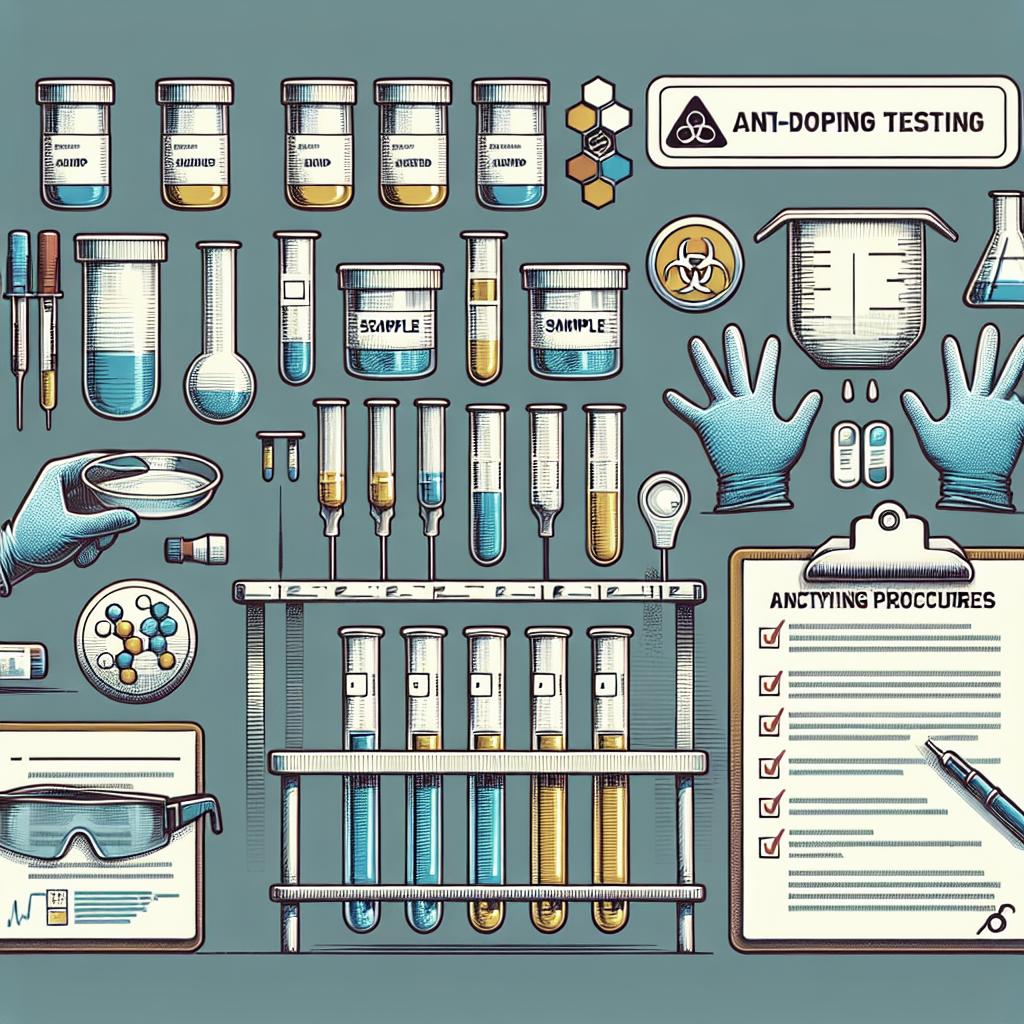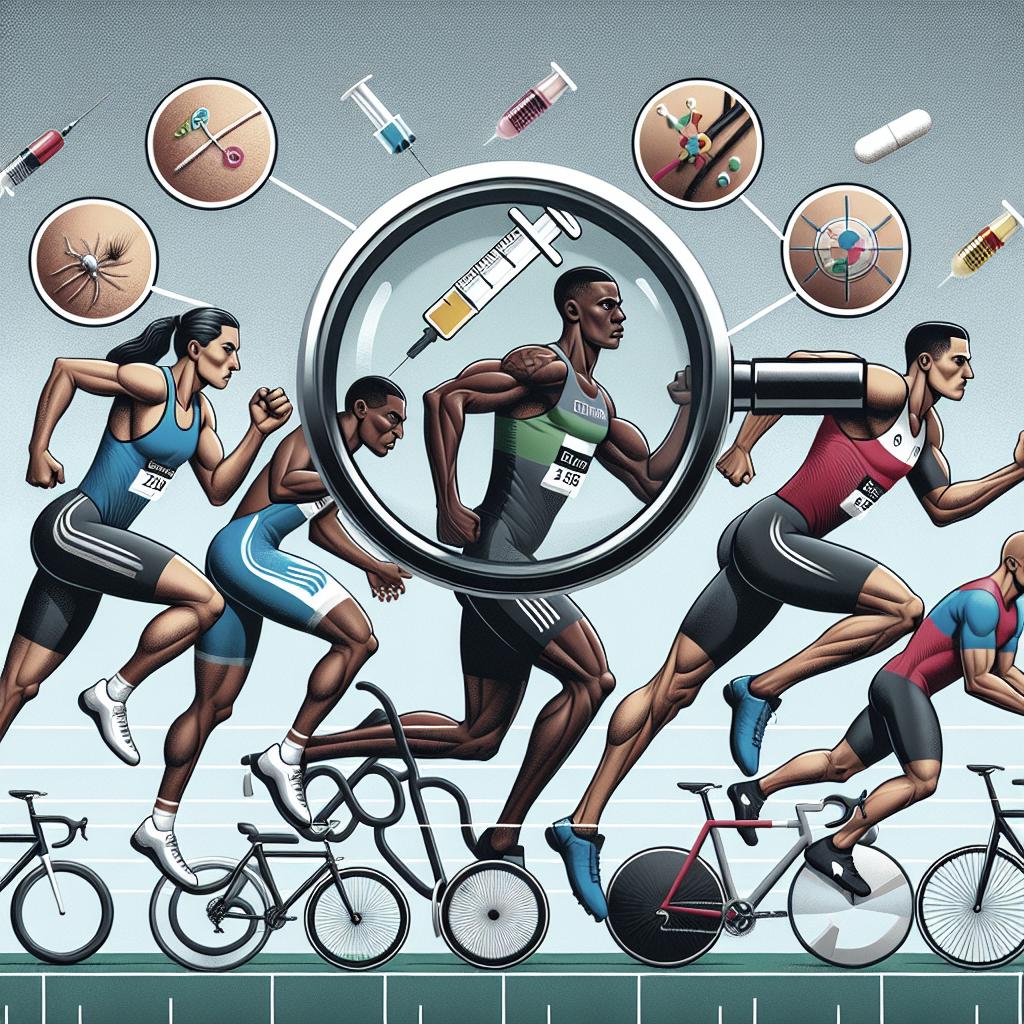<>
“`
Anti-doping testing is a critical component in maintaining the integrity of sports. This process ensures fair play and keeps competitions clean and merit-based. Athletes are subjected to various testing protocols, each designed to detect prohibited substances and methods. In this comprehensive guide, we will cover essential facts about the testing process, delve into athletes’ rights and responsibilities, and offer practical advice on how to navigate the anti-doping landscape. Whether you are an athlete, coach, or sports enthusiast, this information will help you understand the procedures and make informed decisions.
The facts – what you need to know about the testing process
Anti-doping testing consists of a series of well-defined steps undertaken to ensure a sample’s integrity and the correctness of the results. Athletes may be tested in and out of competition and are required to adhere to the protocols specified by their sport’s governing body. These tests can involve urine, blood, and sometimes hair samples, depending on the substances or methods of doping being checked for.
The procedure typically begins with notification, where the athlete is informed about the test. Then the sample collection follows, managed by certified doping control officers (DCOs). The samples are sealed and sent to World Anti-Doping Agency (WADA)-accredited laboratories for analysis. Results are then compared against the prohibited list established by WADA, and any detected violations are followed by appropriate disciplinary measures.
Requesting a Delay
Under certain circumstances, athletes may request a delay for sample collection. These situations include urgent medical needs, attending an ongoing competition event (like during or immediately after competing), or the presence of a representative if the athlete is a minor. The decision to allow the delay lies with the DCO.
However, delays are generally permissible only for short durations, ensuring that testing is carried out as promptly as possible to maintain sample integrity. Athletes must be aware that the reasons for requesting a delay will be documented, and unjustified delays may lead to consequences or increased scrutiny in future testing scenarios.
Athletes’ Rights and Responsibilities
Athletes possess several rights when undergoing doping control. These include the right to have a representative and an interpreter present, the right to document the procedure, and the right to be informed about the substances being tested and the procedure being followed. Additionally, athletes have the right to appeal any decisions or actions taken by anti-doping authorities.
Concurrently, athletes have specific responsibilities. They must comply with the testing protocols, provide accurate whereabouts information, and ensure that any medical treatments are declared and approved if they involve substances on the prohibited list. Understanding and fulfilling these responsibilities are crucial for maintaining transparency and integrity in sports.
What that means for you
For athletes, the anti-doping testing procedures mean maintaining a high level of diligence regarding their health and habits. Athletes must stay informed about the substances listed in WADA’s prohibited list, which is updated annually. Awareness and education about new enhancements in testing technology and protocols are essential to avoid inadvertently violating anti-doping regulations.
Athletes should also regularly update their whereabouts information in the Anti-Doping Administration and Management System (ADAMS). This ensures that DCOs can locate them for out-of-competition testing. Failure to do so can result in missed test reports, which might lead to anti-doping rule violations and subsequent penalties.
What you should do
First and foremost, athletes should familiarize themselves with anti-doping regulations and stay updated on the substances and methods that are prohibited. Consulting with sports medicine professionals or anti-doping advisors ensures that any treatments and supplements are safe and approved.
Another critical aspect is maintaining good documentation. Athletes should keep records of all medications and supplements they are using, including their doses and reasons for use. This helps in case of any need for Therapeutic Use Exemptions (TUEs). Moreover, athletes should be proactive in educating themselves and participating in programs designed to raise awareness about anti-doping measures.
Where to go for further advice
Several resources are available for athletes seeking advice on anti-doping measures. The World Anti-Doping Agency (WADA) provides extensive resources online, including guidelines, educational materials, and the latest updates on prohibited substances and methods.
Also, national and international sporting bodies, such as the United States Anti-Doping Agency (USADA) and the International Olympic Committee (IOC), offer specific guidance and support. Athletes are encouraged to reach out to these organizations for personalized advice and to participate in their educational programs to stay ahead of the curve in the fight against doping in sports.
Lessons learned
| Topics | Key Points |
|---|---|
| The facts – what you need to know about the testing process | Testing involves urine, blood, and hair samples; adheres to WADA protocols; analyzed in accredited labs. |
| Requesting a Delay | Delays allowed for medical needs, ongoing events, and when bringing representatives for minors. |
| Athletes’ Rights and Responsibilities | Rights include having a representative and interpreter; responsibilities include providing accurate information and complying with protocols. |
| What that means for you | Athletes must stay informed about prohibited substances and update whereabouts for out-of-competition testing. |
| What you should do | Consult sports medicine professionals, keep documentation of medications, and educate yourself on anti-doping regulations. |
| Where to go for further advice | Resources include WADA, USADA, IOC, and other national and international sports bodies. |
“`


